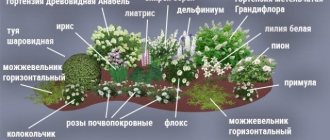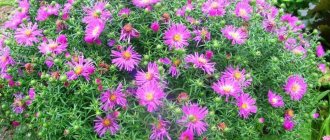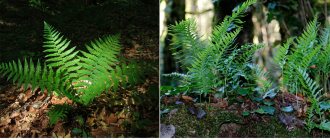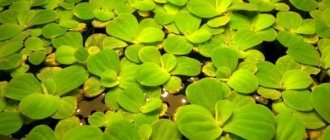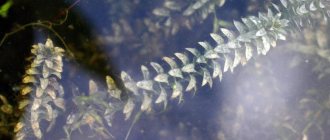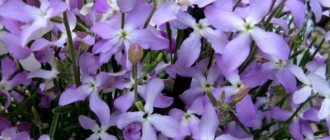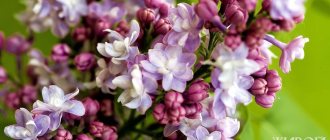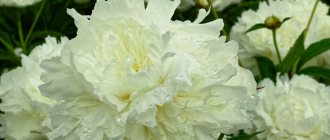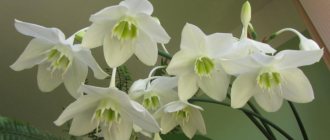A variety of flowers and green spaces turn the dacha area into a wonderful recreation area. To maintain this beauty until fall, savvy designers use drought-tolerant perennials for sunny locations. These amazing crops grow wonderfully without additional watering. They are successfully grown by summer residents who travel out of town only on weekends. Gardeners count dozens of varieties of such plants. Let's go on an exciting “journey” and choose the most spectacular options for ourselves.
Bryozoan subulate or Irish moss
Irish moss
Irish moss is a drought-resistant perennial that is used for landscaping problem areas. It can be used to fill empty space between slabs, decorate alpine slides, rockeries, and even be used as a lawn. The awl-shaped bryozoan is very hardy and tolerates any unfavorable conditions - sunlight, shade, drought and heavy rains. The emerald carpet is resistant to trampling. And in July, Irish moss also blooms with miniature white flowers.
Low growing ornamental trees
On sandy rocky soils on the southern side, low-growing ornamental trees are planted, which do not require much watering and do not shade the area with their crown.
Among the low-growing ornamental trees, the following are especially popular:
- Bagryanyk . This very beautiful small tree is used to decorate the garden. It got its name due to the unusual shade of the leaves in spring, when the entire tree turns crimson. As the leaves grow, they change color several times until they turn green. In autumn the color changes again from yellow to dark red. Plant the plant on the south side in a well-ventilated place.
- Juniper . An evergreen tree with soft needles does not reach a large size when pruned at home. It tolerates heat very easily and is undemanding when it comes to watering. Looks beautiful in garden landscape design.
- Decorative hawthorn . This type of plant differs from the wild one in its beautiful bright flowers, similar to roses, large in size (about the size of a ranetka), and very tasty berries. The tree grows no more than 2 m in height, does not require special care, and tolerates drought and direct sunlight.
- Decorative rowan . Unlike its wild relative, it has larger leaves, very beautiful flowers and large sweet berries without bitterness. It is good to plant on the south side, as it does not shade the area, grows into a small neat tree, and is drought-resistant.
- Japanese quince . A native of Asia loves rocky, sandy, well-drained soil and grows without shelter from frost in the southern regions. It blooms with very beautiful large flowers with a fragrant aroma, which bear tart fruits. In late fall they turn bright yellow and are sweet, but remain tart and very firm.
Tenacious or ayuga
Tenacious or ayuga
The name of this plant speaks for itself. The tenacious creature has a unique ability to survive even in the harshest conditions.
Ayuga prefers open sun and is content with rare watering.
There are many varieties of tenacious, which differ in the variety of leaf colors. The plant reproduces by daughter rosettes, quickly forming a mat.
Annual drought-resistant plants for a flower bed at your dacha
Dear readers, many of you, having a dacha, also have the desire to decorate it with lush flowering plants.
But most plants, including garden flowers, cannot fully grow and develop without sufficient watering. Some simply die from drought. And, if you do not have the opportunity to frequently water your flower beds, especially in hot weather, then you should not plant them, so as not to torment them. But what if you still want to have a flower garden on your site that delights you with its bright blooms? There is a way out: choose annual drought-resistant flowers for the flower bed that can easily tolerate a lack of moisture without losing their beautiful and lush flowering. Some, however, believe that unpretentious plants are not very attractive in appearance, but this is a mistaken opinion.
Today I will tell you about some of these plants - very beautiful and bright, which will delight you with their lush flowering and which require minimal watering. Among them there are both tall and short flowers. And some of them can also fill your garden with a unique aroma.
There are a number of basic rules that must be followed when creating such a flower bed:
- Choose a location taking into account plants that need sun and those that need partial shade or shade.
- The soil should not be swampy and without stagnant water
- Good drainage from pebbles and sand in the soil is a must
- Select plants for the flower bed that must be compatible in appearance and conditions of maintenance, for example, do not mix shade-loving and light-loving flowers together.
- When planting plants, provide them with sufficient space from each other so that they can grow freely.
It is correct to place tall and short plants in the flowerbed so that they do not cover each other, but complement and emphasize the decorative effect.
Sedums
Sedums are striking in their diversity and represent an extensive order of succulent, drought-tolerant groundcover perennials. They get moisture from the air, which they store in thick, fleshy leaves. Plants grow quickly, gracefully covering the most problematic sunny areas. Can be grown in containers.
The most popular types of ground cover sedums:
- caustic;
- white;
- Lydian;
- bent;
- Kamchatka;
- false.
Kermek
A distinctive feature of Kermek is its lush and bright flowers that do not lose their color after drying. Other names for the plant: limonium, statice and tumbleweed. In nature, this is a steppe plant, so it tolerates a lack of moisture well. Plant height varies from 30 cm to one meter.
The flowers, collected in paniculate inflorescences, have a wide range of colors: pink, purple, blue, yellow, white, green and others. Blooms from mid-summer until frost.
The most popular annual, blooming with bright blue inflorescences, reaches a height of up to 80 cm.
There are also perennial plant species - Kermek tree-like and Kermek Gmelina. They are frost-resistant and can winter without shelter.
Kermek needs nutritious, sandy soil; it practically does not need watering, but once a summer it needs to be fed with complex fertilizers. Not affected by pests or diseases.
They are grown by seeds, sowing them directly into open ground at the end of May. It can also be grown through seedlings. But since the plant does not tolerate transplantation well, the seedlings need to be planted with a lump of earth so that neither soil nor water gets into the socket.
Subulate Phlox
Phlox subulate
Phlox subulate is a perennial plant that grows in a large cushion. It blooms in May with numerous star-like small flowers of a wide variety of shades.
Phloxes are planted in open sunny areas. They are used as a border plant or planted at the base of perennials. They are also planted in separate clumps on the lawn.
Selecting plants for a dry garden
Annuals
The ease of caring for annuals, their ability to add new colors to the flower garden every year, the most amazing forms and their inexhaustible variety have and will continue to attract flower growers.
Among the flowering annuals, we can recommend the following plants for a drought-resistant garden:
- Zinnia (Zinnia) is an annual flowering plant with a height of 30 to 90 cm. The leaves are located opposite each other, the stem and leaves are rigidly pubescent. It blooms in temperate latitudes from June to frost, the inflorescence is a basket, there are a wide variety of shades, the seeds have time to ripen and do not lose their germination for 2-4 years. Based on two types of zinnias - graceful and narrow-leaved, many varieties have now been bred for growing in flower beds.
- Rudbeckia is an annual or perennial flowering plant. The leaves are oval below, lanceolate above. The flower is a basket with tubular and reed flowers. The tubular flowers form a brown tubercle, characteristic of this species. The flowers are similar to daisies and are usually yellow or orange. The seeds are tetrahedral, small.
- Cosmos is a tall flowering plant imported from South America. The leaves are twice pinnately dissected, giving the plant an openwork appearance. The flowers are large, on long bare stems, the color ranges from white or pale pink to purple. The seeds ripen very well and reproduce by self-sowing.
- Ornamental sunflower species (Helianthus annuus) is an annual tall plant, up to 2.5 m. The leaves are heart-shaped, arranged alternately. The stem and leaves are rigidly pubescent, the flower is a basket with dark tubular flowers and yellow petal flowers. The seeds are wedge-shaped, smooth, slightly pubescent.
- Ornamental poppy (Papaver rhoeas) is an annual plant that comes in many varieties with varying colors. This light-loving plant is planted in separate group plantings on a lawn or flower bed, as well as in a group of different varieties.
Rudbeckia Cosmea Ornamental poppy
Ground cover plants
These drought-tolerant perennials are low-growing, up to a maximum of 35 cm, and very attractive. Forming dense, growing clumps, they are perfect for alpine hills and rocky gardens. They tolerate bright sun very well. Light, low-moisture soils suit them best. The list of sun-loving perennials can be long:
- Juvenile (Sempervivum) : cobweb, hybrid, roofing, offspring - they all form dense rosettes of purple or green color. In summer, large flowers of pinkish, yellowish, red colors look impressive against this background.
- Sedum - a stunning variety of shapes and colors. The leaves are yellowish, green, purple. The flowers are crimson, orange, yellow, pink. They bloom from June to August and form extensive thickets.
- Carnation (Dianthus) , well, what would we do without it? Carnation is grassy and gray, with simple or double flowers of stunningly beautiful colors - from white-pink to raspberry-red.
- Arabis (Arabis) is a low creeping plant with rooting stems. Can be annual or perennial. The leaves are pubescent, the flowers are white, yellow or pink, double or not, in inflorescences on a stalk. The fruit is a pod.
Arabis was young
- Rock alyssum (Alyssum saxatile) is a plant of the steppe hills and mountains of Siberia. A small herbaceous shrub with woody shoots. The leaves are ovoid, heavily pubescent, with a gray tint. The flowers are yellow and form a raceme. It requires calcium-rich soil.
- Saxifraga (Saxifraga) is a perennial plant with a well-developed root system. The flowers look like a star and form inflorescences. The leaves are thick, with a glossy, leathery sheen, and exude lime along the leaf margins. Thickets of saxifrage form turf covers.
- Phlox subulata is a plant with recumbent shoots and spiny, sharp leaves that form evergreen turf. It blooms very profusely, flowers of various shades. Grows well on rocky soils, hills and mountainous surfaces.
- Tomentosum (Cerastium tomentosum) is a herbaceous plant up to 30 cm tall, with white flowers collected in corymbose inflorescences. The leaves are silver-green and have a pubescent edge. Lives in mountainous and hilly areas.
- Mesembryanthemum is an annual or biennial creeping or creeping succulent up to 15 cm high. The flowers resemble daisies and open at noon. Vitrified cells in the form of dew drops are visible on the top of the stems.
Mesembryanthemum tomentosa
Perennials
The list of drought-resistant perennials can be continued. Unpretentious and hardy, they feel great in the sun and grow well between the stones of alpine hills and rockeries:
- Wormwood (Artemisia) is a perennial herbaceous subshrub with a tart, bitter aroma of shoots. The leaves are green to silver-gray, dissected. Flowers are in racemose or paniculate inflorescences, the fruit is an achene.
- Euphorbia (Euphorbia) is a perennial herbaceous or shrubby plant. In addition to seeds, it reproduces by root shoots. All representatives have a milky juice on the cut, which is very poisonous. The flowers are single or collected in rosettes, the inflorescence is surrounded by some kind of glass.
- Yarrow (Achillea) is a perennial plant with baskets with many flowers, it would be more correct to say “yarrow”. Widely used in folk medicine, stems up to 50 cm high. Yarrow extracts sulfur from the soil and distributes it throughout the area.
- Lavender has a wonderful aroma; its purple thickets make a beautiful decoration for garden paths.
- Daylily (Hemerocallis) - a plant with tall arrows, at the ends of which there are flowers - has a great variety and is completely unpretentious.
Wormwood Euphorbia Lavender
Drought-tolerant grasses
Designing a flower garden without herbs and grains cannot be considered complete. From decorative drought-resistant grasses you can plant:
- Byzantine chistina (Stachys byzantina) is a bluish-green plant with fluffy leaves.
- Elimus (Elymus) - another name - grate. An unpretentious herbaceous plant, usually propagated by shoots from the rhizome. The inflorescence forms a panicle, reminiscent of an ear of rye or wheat, and is stored dried on the stem for a long time.
- Gray fescue (Festuca glauca) is a perennial plant up to half a meter tall. The rhizomes are creeping, the inflorescences form panicles with spikelets, the fruit is a caryopsis. The leaves are lanceolate and can range from green to silver in color.
- Two-leaf grass (Phalaroides) is a perennial grass up to 120 cm high with striped linear leaves. It blooms with spikelets collected in panicles. The leaves do not droop even from severe frosts. Usually, with the help of vegetative shoots from the rhizome, it grows very strongly and can become a difficult weed.
Byzantine Chistets Elimus Dvukistochnik
These herbs will add charm to your flower garden, giving it sophistication and attractiveness.
tall plants
Mallow
First of all, among the tall, drought-resistant plants, I would like to mention the decorative onion and mallow . Each of these plants is beautiful in its own way. Double hollyhock flowers captivate your heart with their richness of shades - from burgundy to snow-white. Mallow blooms all summer - from June until almost frost. And these plants grow up to two meters in height.
The decorative onion Allium is not far behind them. Its spherical inflorescences of pink and white shades rise up to one hundred and seventy centimeters.
It will be useful to read:
Yellow garden flowers in a flower bed Yellow is the color of the sun, and it’s not for nothing that yellow flowers are a symbol of joy and happiness. They bring warmth to every corner of the garden...
Drought-resistant shrubs
It is often very difficult to do without ornamental shrubs when building a landscape. Shrubs are the note that makes the garden truly sound, giving completeness and visual completeness to the landscaping of the territory, on which you have put so much of your strength, your imagination, your desire for beauty.
Cossack juniper (Juniperus sabina) is beyond competition. It does not require additional care and can withstand unfavorable conditions quite well. Attractive, evergreen, one can say about this shrub that if there are charismatic plants, then this is about it. Juniper with its presence brings special charm and beauty to the landscape.
Euonymus (Euonymus) is a beautiful, very bright, even somewhat picturesque shrub. It is difficult to take your eyes off the euonymus surrounded by properly selected low-growing plants. In the summer months, its openwork, dark green foliage attracts, but autumn comes, and the crown of the bush is engulfed in such a riot of colors that you can’t take your eyes off it. Many of its species are quite drought-resistant. This applies to winged euonymus, Fortune's euonymus and others.
A good example of unpretentiousness and drought resistance is barberry (Berberis) . Yellow and bright red leaves adorn the long, thorny branches. Barberry loves the sun and feels great under its rays. Details of caring for this shrub can be found here.
Euonymus Euonymus Barberry
Common thyme for an extraordinary flower garden
This wild type of thyme is, of course, inferior to decorative varieties: its foliage is not so lush, and it is not covered with a lush carpet on the ground. But it has one undeniable advantage: it is unpretentious and can grow in any conditions.
The plant self-sows abundantly and quickly spreads into a lacy blanket of delicate lilac fragrant flowers.
Thyme is not afraid of trampling and responds to every touch with a fragrant trail.
It can be used as a spice.
Drought-resistant varieties of berry crops
Strawberries.
Suitable varieties are Vityaz, Kokinskaya Zarya, Fireworks, Junia Smiles, Anna, Zhemchuzhnitsa, Dukat, Olympus, Carnival, Govorovskaya, Maria, First Kiss, Snezhana, Rus, Mommy, Epic, Bravo, Unexpected Joy, Red Gauntlet, Timiryazevka, Irma, Elizaveta 2, Seascape, Asia, Darselect, Florence, Bereginya, Festivalnaya, Merchant's Wife, Amulet, Venta.
Raspberries.
This crop is generally not considered drought tolerant. The varieties Atlant, Hercules, Poklon Kazakovu, Podarok Kashina, Antey, Eurasia, Balsam, Bryanskoe Divo can be considered relatively drought-resistant.
Blackberry.
Varieties: Thornfree, Kittatinny, Erie, Comanche, Oregon, Smutstem, Durrow, Himalaya.
In terms of protecting berries from drought, it is best to use mulching with black film: it will prevent moisture evaporation and at the same time prevent nematodes and other pests from infesting.
Read also: Growing strawberries under agrofibre.
Niedzwedzkia semiretschenskia
This plant was named after the Russian botanist Vladislav Nedzvetsky. It grows on dry and rocky slopes. Niedzwiecki has purple flowers that appear between late April and August. Found in the Altai Mountains of Kazakhstan, Siberia, Russia and Central Asia. The preferred habitat of the plant is steppes, meadows, gravelly slopes and feather grass thickets. Nedzvetskaya Semirechenskaya is listed in the IUCN Red List as an endangered species. The main threats to the plant are overgrazing and other agricultural activities.
